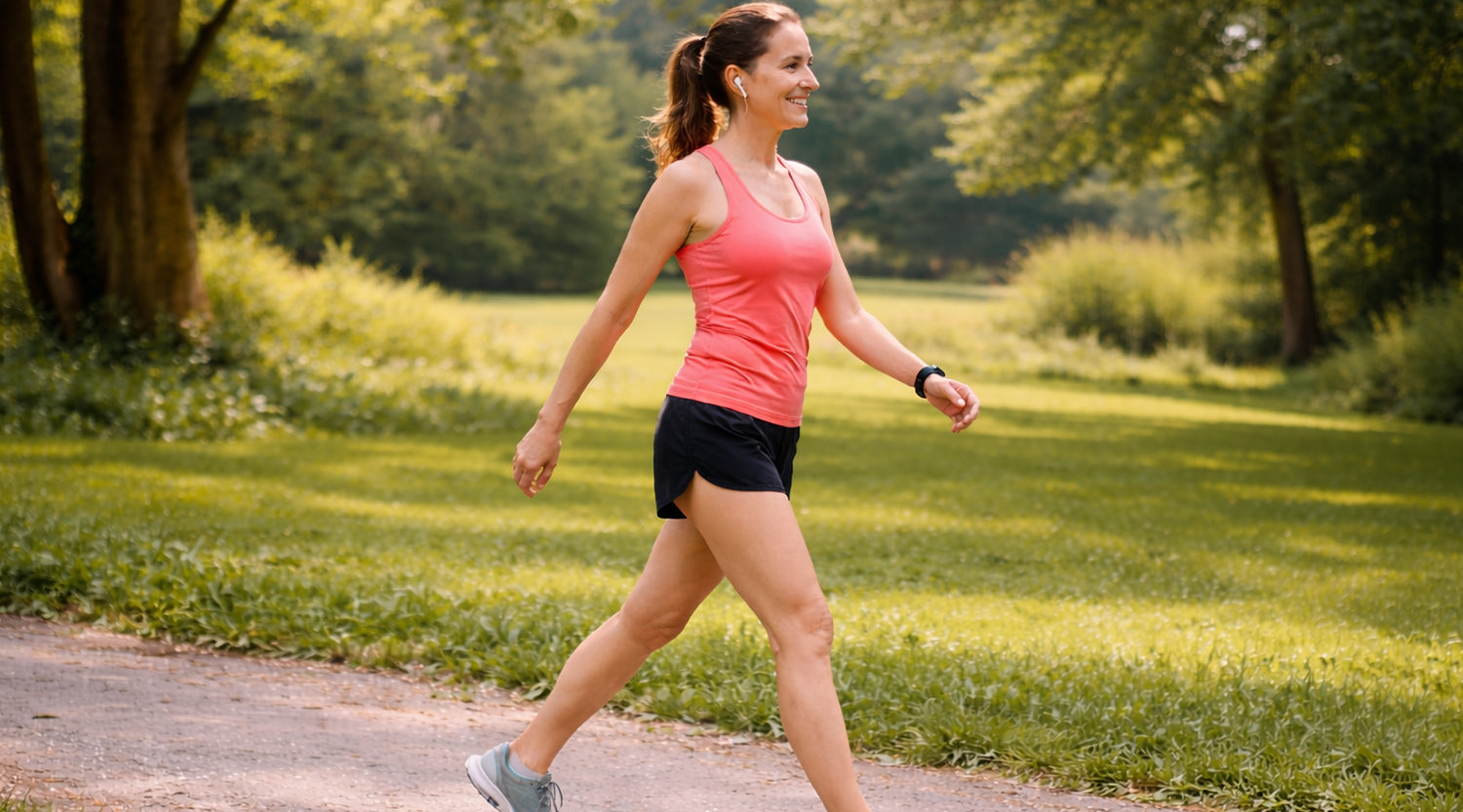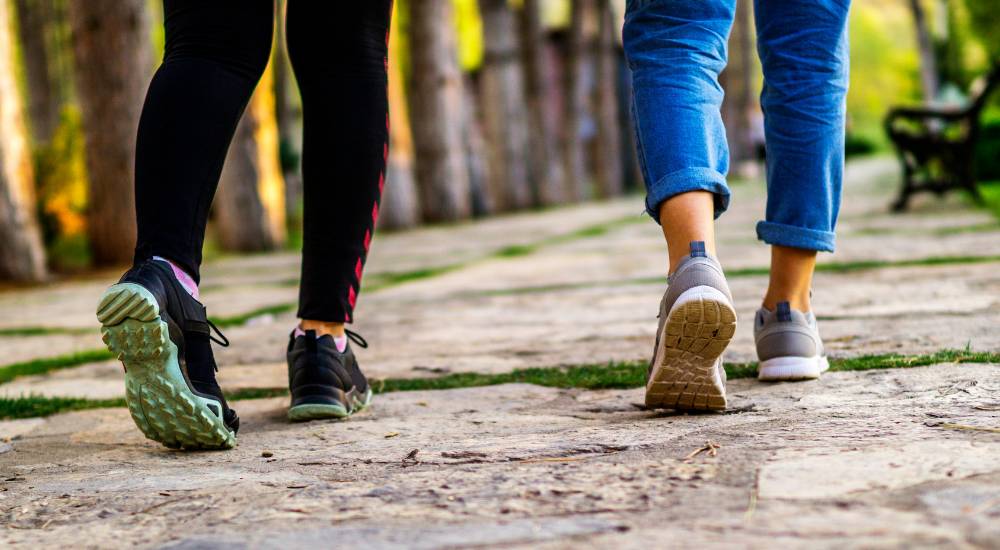Walking is a simple yet powerful form of exercise that can greatly contribute to your overall health and well-being. Incorporating brisk walking into your daily routine can provide numerous benefits, including calorie burning, reduced health risks, improved mood, and increased life expectancy.
Read more: Is Walking 3 Miles a Day Good for Your Health?
The Power of a 20-Minute Walk
A brisk daily walk might sound like a modest endeavor, but its impact on your health should not be underestimated.
By dedicating just 20 minutes to this activity, you can boost your metabolism, and potentially shed more calories. A short walk, taken at a brisk pace, can easily cover at least one mile and contribute 2,000 to 3,000 steps to your daily step count. Depending on your weight, it can burn approximately 70 to 100 calories.
What's even more remarkable is the potential risk reduction associated with this simple routine. A significant study has shown that a brisk 20-minute walk each day could lead to a reduction in the risk of early death by up to 30%. This finding emphasizes the profound impact that consistent brisk walking can have on your overall health.
What Is Brisk Walking?
Brisk walking isn't just a leisurely stroll. It involves moving at a pace that gets your heart rate up and qualifies as moderate-intensity exercise. To meet the criteria for brisk walking, you should maintain a pace of 20 minutes per mile (3 mph) or faster. Additionally, your heart rate should fall within the moderate intensity zone, which the Centers for Disease Control and Prevention (CDC) defines as 50% to 70% of your maximum heart rate.
Checking your pulse after a few minutes of brisk walking can help you gauge whether you're within the target heart rate zone. Alongside this, your breathing should be heavier than usual, but you should still be able to converse in complete sentences.

Benefits of Walking for Exercise
Fat Loss
Whether outdoors or on a treadmill, walking helps with weight management and has been found to help reduce abdominal obesity.
Mood Enhancement
Walking, especially when combined with meditation, can have a positive impact on your mood and emotional well-being.
Life Expectancy
Studies reveal that brisk walking contributes to longevity by reducing the risks of cardiovascular diseases and mortality. It can add up to 20 years to your life expectancy.
Optimal Times and Places for Walking

Integrating a walking routine into your schedule doesn't have to be complicated. Choose the time that best suits your lifestyle. In the mornings you can kickstart your day with a brisk walk before work or as you take your dog out. You can also use your lunch break for a rejuvenating walk, countering prolonged periods of sitting. Or go for a walk in the evenings, and unwind after work or dinner.
Committing to two 15-minute brisk walks five days a week fulfills the recommended minimum of 30 minutes of moderate-intensity exercise for maintaining good health.
While outdoor walking offers the benefits of nature and fresh air, you can adapt your routine based on equipment and convenience. Opt for indoor brisk walking on a treadmill when outdoor conditions aren't favorable. Walk in place when space is limited, which provides an alternative for home workouts. Or take advantage of indoor environments, air conditioning, and the potential for companionship by walking at a nearby mall.
20-Minute Brisk Walking Workout
Here's a step-by-step guide to help you maximize the benefits of a 20-minute brisk walking session:
1. Warm-up
Before starting your walk, perform a few simple stretches to loosen your muscles. Shoulder circles and neck stretches can help prepare your upper body.
2. The Right Posture
Maintaining proper posture is crucial for effective brisk walking. Stand tall, engage your core, keep your eyes forward, and maintain a parallel chin to the ground. This posture promotes efficient movement and allows for deep breathing.
3. Start Slow
Begin with a gentle pace for 1 to 3 minutes. This gradual increase in pace will help you adjust your posture and get your leg muscles ready for more intense movement.
4. Increase Your Pace
Transition to a brisk pace for the next 20 minutes, aiming for a rate of 15 to 20 minutes per mile (3 to 4 mph). Use your arm motion to set the walking pace, as your feet naturally follow the rhythm of your arms.
5. Monitor Your Heart Rate
After 2 minutes, check if you're within the moderate intensity heart rate zone. Adjust your arm movements to increase your pace if needed. Reassess your heart rate every 5 minutes. Pay attention to your breathing, which should be elevated but still allow you to hold a conversation.
6. Cool Down
Finish your brisk walk with 1 to 3 minutes of walking at a slower pace. Consider ending your session with a series of stretching exercises to aid in recovery.
Graduating to a 30-Minute Walking Workout
Once you're comfortable with a 20-minute brisk walk, consider extending your workout to 30 minutes. Begin by gradually adding 5 more minutes of brisk walking to your routine. As you adapt, strive for a 30-minute brisk walk, at least 5 days a week. This level of commitment aligns with the recommended moderate-intensity exercise for minimizing health risks and is particularly beneficial for individuals dealing with diabetes and osteoarthritis.

Want a free 30-Day Step Challenge?
Although finding time for a brisk walk might present challenges, the rewards in terms of reduced health risks and improved well-being are well worth the effort. Whether you choose a treadmill or the great outdoors, brisk walking offers a gateway to enhanced health and longevity.




